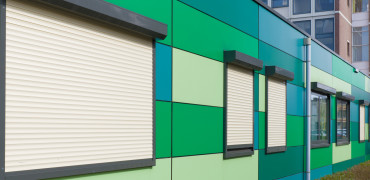Whilst universities have certainly been in the news this year, it’s not been for the ‘normal’ reasons as the COVID-19 pandemic has disrupted life everywhere and nowhere more so than further education.
Yet as the nation looks at ways of reducing our impact on climate change, we mustn’t forget that universities represent a significant part of the UK's building stock, with a combined estate that has over 16,000 buildings, making up nearly 30 million m2 of floor area.
And this estate is enormously varied. University campuses can include staff offices; teaching areas from large lecture theatre to small breakout meeting rooms; laboratories; theatres; gyms and restaurants. Plus, of course, student accommodation in various forms.
Today’s students are probably the most environmentally concerned generation we've ever known
Varied challenges
In terms of the variety of challenges that the estate managers and engineers face on a day-to-day basis, a university campus is a small town.
The COVID-19 pandemic required a rapid response from this sector, where thousands of people live and work in close proximity. But now the focus is very much on how to re-start and open buildings in the safest and most effective way possible.
In the background to these issues is the drive towards sustainable operation. Universities in the UK have very much been leading the field in their commitments to reduce carbon footprint and lower energy use – alongside other sustainable commitments such as recycling more materials, using renewables on-site and divesting financial investments in fossil fuel sectors.
Demanding customers
The big driver behind all this has been the universities' main customers: students. They're part of a generation that is more environmentally-aware than ever before.
Research carried out by the National Union of Students (NUS) in October 2019, shows that 86% of respondents to a survey of 6,000 students agreed that: "Sustainable development is something that universities and colleges should actively incorporate and promote".
There are a few groups that have been established by students to rank universities' environmental policies.
The rankings (for example, People&Planet) are taken seriously by the sector. There is competition to gain a higher place on these lists. Many universities have made public commitments to achieving net-zero carbon by 2050, and some have set themselves even shorter deadlines in the 2030s.
Building comfort
As with most buildings, heating, cooling and ventilation represent big energy-users for university buildings.
And making them as efficient as possible is challenging because of the variety of building types, different usage patterns and occupant requirements. One of the most recent targets has been decarbonisation of space and water heating, which is also a goal set by the UK government.
One strong trend happening across the UK is the switch to electric heating.
Hot water heat pump
Carbon emissions from the UK electricity grid have fallen by over 50% in recent years, so electric heating is a strong alternative to gas-fired boilers.
The latest heat pumps are a flexible heating and hot water technology, applicable across a range of buildings, from small offices to large student accommodation blogs. For example, the Mitsubishi Electric Ecodan CAHV is a modular system, easily sized to suit the requirements of a particular project.
And in recent developments, Mitsubishi Electric has launched the Ecodan QAHV which provides water at 90 degrees Centigrade – removing the need for back-up boilers to raise water temperatures.
One of the benefits of heat pumps is that they require only water and electric connection, and are a low-maintenance technology, reducing pressure on the busy campus engineering team.
Global warming
And for energy-efficient cooling, there are now systems that make use of refrigerants with a low Global Warming Potential (GWP) such as R32. Systems such as the R32 Power Inverter Heat Pump offer instant indoor environmental comfort that users can control locally.
And the facilities team can monitor performance through online connectivity – again, helping to support busy facilities teams with large campuses to manage.
Universities' determination to set sustainable goals is laudable.
They are also an example of a sector which is responding directly to its key customers who are probably the most environmentally concerned generation we've ever known.
Those who will employ today's students in the future should bear this in mind when thinking about their buildings and approaches to sustainability.
Kevin Pocock is a Business Development Manager



